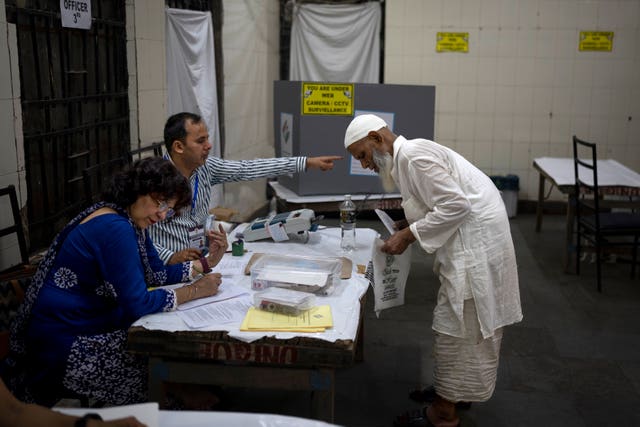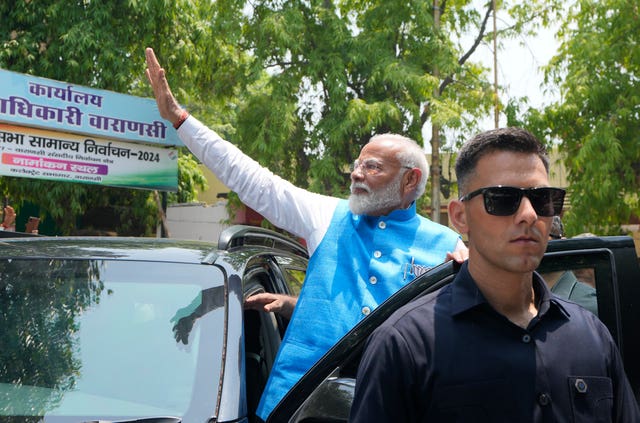
Lewis Goodall 10am - 12pm
25 May 2024, 05:44

Saturday’s voting in 58 constituencies, including seven in New Delhi, will complete polling for 89.5% of 543 seats in the lower house of Parliament.
Millions of Indians were voting on Saturday in the next-to-last round of a gruelling national election with a combined opposition trying to rattle Prime Minister Narendra Modi’s campaign for a third term.
Many people lined polling stations before the start of voting at 7am to avoid the blazing sun later in the day at the peak of Indian summer.
Saturday’s voting in 58 constituencies, including seven in New Delhi, will complete polling for 89.5% of 543 seats in the lower house of Parliament.
The voting for the remaining 57 seats on June 1 will wrap up a six-week election. The votes will be counted on June 4.

This election is considered one of the most consequential in India’s history and will test Mr Modi’s political dominance. If he wins, he will be only the second Indian leader to retain power for a third term, after Jawaharlal Nehru, the country’s first prime minister.
A lower-than-expected voter turnout in the previous five rounds of voting seems to have left both sides guessing about the outcome of the election.
Temperatures are likely to rise above 45C in some places on Saturday. Election authorities said they are taking steps to ensure voters’ comfort, including setting up fans and tents and providing drinking water.
Most polls predict a win for Mr Modi’s Hindu nationalist Bharatiya Janata Party (BJP), which is up against a broad opposition alliance led by the Indian National congress and powerful regional parties.

Mr Modi was involved in a highly acrimonious and mudslinging campaign with the opposition, led by Rahul Gandhi, the scion of the Nehru-Gandhi family that has produced three prime ministers.
“When the polls began it felt like a one-horse race, with Modi leading from the front. But now we are seeing some kind of shift,” political analyst Rasheed Kidwai said.
“The opposition is doing better than expected and it appears that Modi’s party is rattled. That’s the reason you see Modi ramping up anti-Muslim rhetoric to polarise voters.”
Mr Modi ran his campaign like a presidential race, a referendum on his 10 years of rule. He claimed to help the poorest with charity, free health care, providing toilets in their homes, and helping women get free or cheap cooking gas cylinders.
But he changed tack after a poor turnout of voters in the first round of the election and began stirring Hindu nationalism by accusing the congress party of pandering to minority Muslims for votes.
Hindus account for 80%, and Muslims nearly 14%, of India’s over 1.4 billion people.
Nearly 970 million voters — more than 10% of the world’s population — were eligible to elect 543 members to the lower house of Parliament for five years.
Voters’ relative apathy has surprised some political analysts. In the five rounds of polling the voter turnout ranged between 62.2% to 69.16% — averaging 65.9%.
By comparison, India’s 2019 national election registered the highest-ever voter turnout — 67.11%. Mr Modi’s BJP won 303 seats in parliament in 2019.
Mr Modi’s inauguration of a massive Hindu temple for the most revered Lord Rama, his massive roadshows and big public rallies raised the BJP’s hopes of a massive a surge of voters in its favor.
Mr Modi came to power in 2014, dislodging the congress party that governed the country for nearly 55 years after India won independence from British colonialists in 1947.